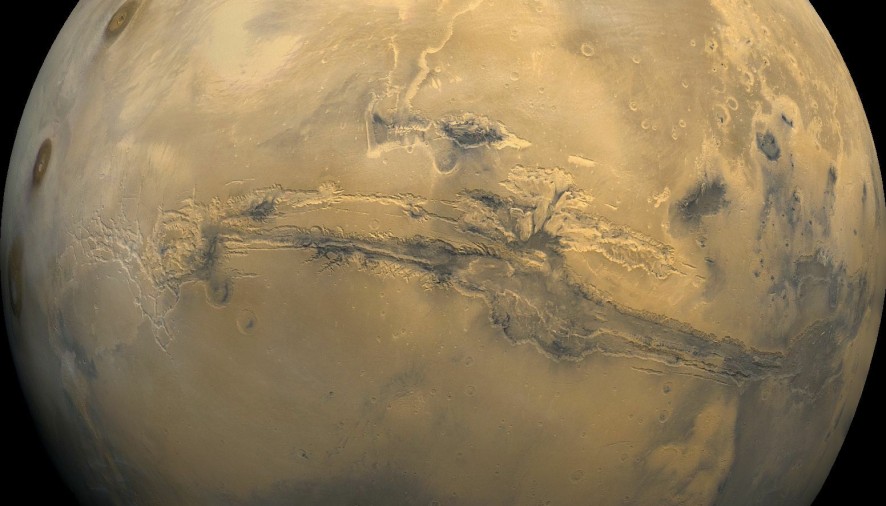Beyonce Knowles, when addressing all of the single ladies, suggested that ‘if you liked it then you should have put a ring on it’. Well, this week, Nature Geoscience have published the news that the planet Mars – currently enjoying a resurgence in public interest – has taken heed and is all set to get its very own ring system. The iconic red planet may one day be known for more than just its colour.
The latest news surrounding Mars relates specifically to the Martian moon ‘Phobos’, located 6,000 kilometres above the planet’s surface. Phobos, which measures a meagre 22 kilometres in width, is currently spiralling towards the red planet due to its gravitational pull – a fact well documented by planetary scientists. However, its eventual fate on reaching the surface – in particular, if it will remain intact or fall apart – has long been questioned.
Researchers from the University of California have forecast the Martian moon’s impending doom, predicting its eventual break-up from using data, such as its density and strength, to model the future prospects of Phobos. The lead author of the research, Dr Benjamin Black, when commenting on their predictions said, “If you were standing on the surface of Mars, you could grab a lawn chair and watch Phobos shearing out and spreading into a big circle”. Indeed, the strains caused by the gravitational pull of Mars are already evident, with kilometre-long grooves demonstrating immense stresses which will, ultimately, result in the fragmentation of the condemned moon.
So Mars, when can we see your halo? The predicted break-up of Phobos is set to take place in around 20 to 40 million years’ time – so, sadly, we will be unable to witness the creation of the red planet’s new ring. However, the drawn-out demise of Phobos will give rise to an equally rare research opportunity. There is speculation that its fate resembles that of previous moons; ones which, during the Solar Systems ‘early years’, also broke up and formed rings around their incumbent planets. Therefore, any viewable changes that Phobos will undergo in the coming years, however small, could give an insight into a planets history. As such, we could begin to understand the how and why behind Saturn’s recognisable rings.
Following the recent glut of big announcements – such as the evidence of flowing water on the planet’s surface – this latest news looks set to keep Mars as the hot topic in the world of science.
Dougie Philips
[Image:NASA, hosted on Wikipedia, uploaded by Miguel Cervantes]

